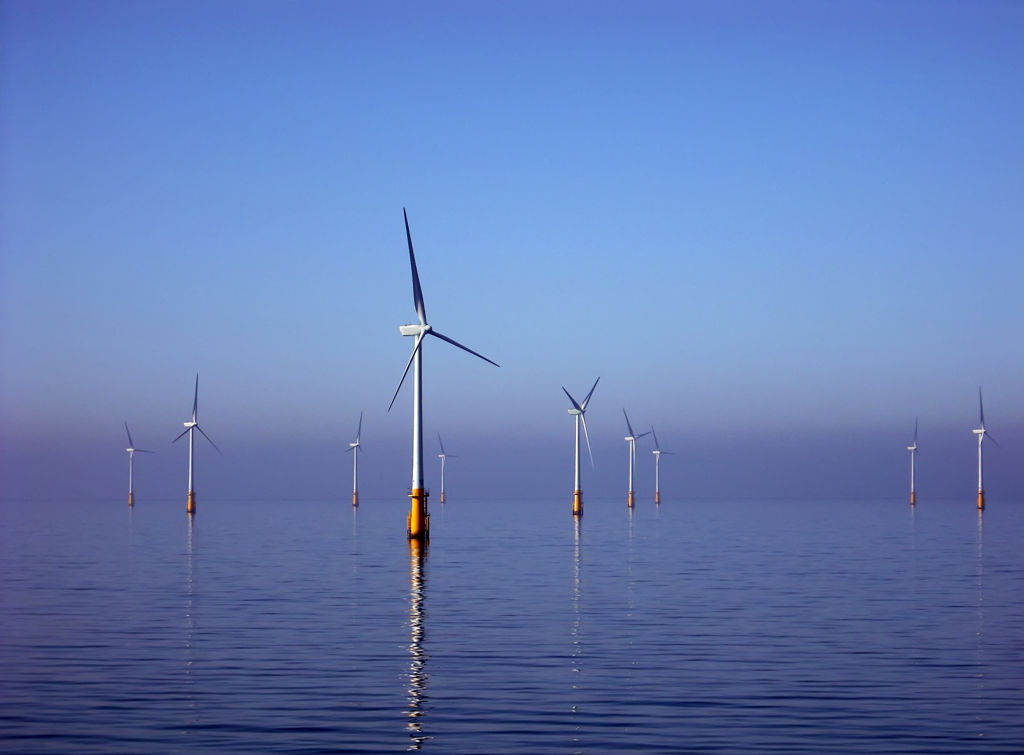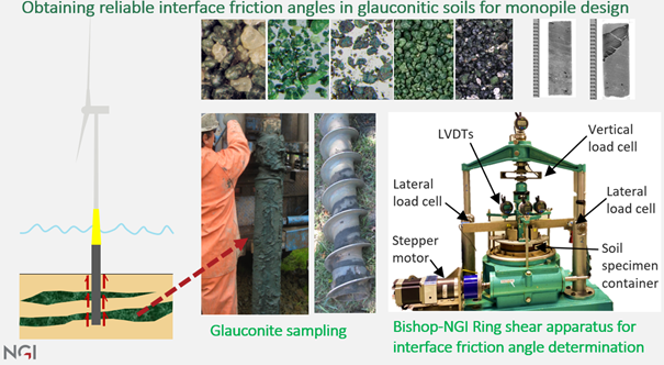Obtaining reliable interface friction angles in glauconitic soils for monopile design
The main objective of this master thesis is to obtain reliable values of the ultimate interface friction angle for monopile design for offshore wind turbines installed on glauconitic soils.

The development of offshore wind farms is facing challenges regarding the characterization of glauconitic soils. There is a need to understand not only the glauconitic soil behaviour but also to develop appropriate testing techniques that are representative of changes in soil conditions due to pile installation effects, particularly for the offshore wind industry in the US Atlantic Continental Shelf where high concentrations of glauconite sands are found.
This proposed research aims to obtain reliable values of the ultimate interface friction angle (dr) for monopile design for offshore wind turbines installed on glauconitic soils. The soil‐to‐steel dr is usually obtained using the Ring Shear (RS) apparatus and/or the Interface Shear Box apparatus.
However, there is a very limited experience with glauconitic soil and no database on high-quality RS tests performed on glauconitic soils for reliable estimation of dr. To date, no systematic research has been carried out to investigate glauconitic soil interface friction.
The assignment
The proposed research aims to derive a credible (non‐conservative) interface friction angle for glauconitic soils. A systematic experimental study (index and interface shear tests) is proposed to investigate glauconitic soils. A series of index and advanced laboratory tests are part of this research.

During this project, the student will learn how to:
- process and interpret geotechnical laboratory tests (applicable for both onshore and offshore design of monopiles)
- synthesize test results concerning the scientific literature
- effectively communicate the results of geotechnical tests through visual, written, and oral forms
- working within an international team
Primary research questions:
- What is the difference between the interface friction angle of allogenic and autogenic glauconitic soils?
- How do vertical effective stress, over-consolidation ratio, fines content, and glauconite content affect the interface friction angle?
- What are the effects of cyclic loading on strength degradation?
- What is the difference between the interface friction angle of crushed and non-crushed glauconite?
